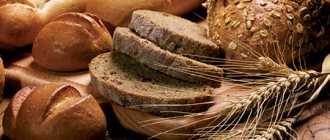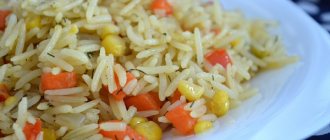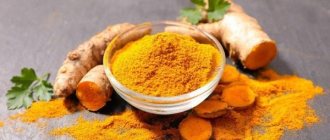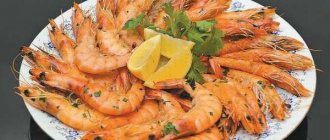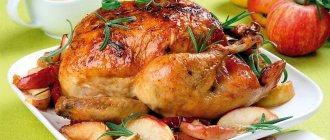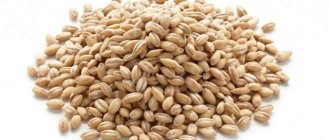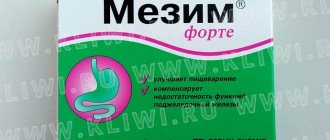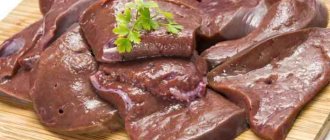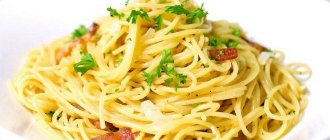Sweets harm even a healthy body, let alone an inflamed pancreas. A healthy person needs only 40 g of glucose per day, and a patient with pancreatitis requires several times less.
Pancreatitis is a serious disease that causes complications. Therapy involves a strict diet; it is strictly forbidden to consume foods with heavy fats. And it turns out that all tasty foods must be excluded from the menu.
It is possible that for some, life without sweets is the norm, and giving up such products is not difficult. But other patients are interested in whether it is possible to eat sweets with pancreatitis, because they cannot imagine their life without caramel, marmalade, and chocolates.
Ideally, you should completely give up sweets. However, the restriction leads to serious psychological discomfort, which often worsens the situation. So, let's figure out what sweets are possible for pancreatitis?
Diet for pancreatitis
Inflammation of the pancreas negatively affects the functioning of the entire body. Improper production of enzymes and hormones by a diseased organ leads to digestive disorders and intoxication of the body. In order not to provoke the release of toxins into the blood and deterioration of health, with pancreatitis it is very important to follow a certain diet. The consumption of certain foods leads to an exacerbation of pain, as it provokes the pancreas to work more actively. The consequences of this may be an exacerbation of the inflammatory process, which can lead to necrosis of the walls or their rupture. Therefore, a diet for pancreatitis is a necessary condition for the patient’s well-being and the prevention of complications.
Pancreatitis in the acute phase
The possibility of consuming different foods for this disease depends on the form in which it occurs, whether pancreatitis is acute or in remission.
During an exacerbation of pancreatitis, consuming sugar is strictly prohibited. You cannot use it as an additive to other dishes or drink sweet drinks.
The endocrine cells of the inflamed pancreas are worn out, so it is not able to function effectively, which affects the patient’s condition. And only a complete abstinence from sweet foods and dishes will avoid a situation where insulin production stops.
Sweeteners will help compensate for the deficiency of sweets during the acute period of the disease.
Sugar is sometimes called "white death". This expression most accurately characterizes its effect on the body of a patient with pancreatitis, since excessive consumption of sugar can lead to hyperglycemic coma. Therefore, doctors recommend using sweeteners during the acute phase of the disease.
Is it possible to eat sweets with pancreatitis?
It is most difficult for those with a sweet tooth to cope with food restrictions. With pancreatitis, sweets are prohibited. After all, to process glucose you need insulin, which is produced by the pancreas. This increases the load on the diseased organ and can lead to the development of diabetes. For a healthy person, eating sweets does not cause any problems. But during the inflammatory process, it is better not to put additional stress on the diseased organ.
But the peculiarities of eating sweets during pancreatitis depend on the severity of the disease, its phase and the individual characteristics of the patient. In the acute form, you will have to give up any sweets; even a small amount of them leads to activation of the pancreas and an increase in the inflammatory process. And one of the goals of treatment is to reduce the load on the organ. During remission, you can gradually include sweet foods in your diet, but not all of them: you will have to give up many of your favorite sweets in any form of pancreatitis.
Benefits and harms
Many sweets are prohibited for pancreatitis because they provoke the pancreas to produce large amounts of insulin, which is necessary for their processing in the body. Thus, the diseased organ experiences extra stress, and there is an additional risk of developing diabetes mellitus, which will aggravate the patient’s condition.
In the acute form of the disease, glucose is excluded from the diet; if necessary, it is administered only intravenously if this is necessary to maintain the patient’s activity.
In the chronic stage, the list of acceptable foods containing sugar gradually expands. It should be borne in mind that sweets are also a source of excessive amounts of carbohydrates and fats, which are harmful to the recovering pancreas and can cause deterioration in heart function, disrupt metabolism and provoke digestive problems, especially with cholecystopancreatitis, as well as gallstones.
In the acute form of the disease, glucose is excluded from the diet; if necessary, it is administered only intravenously if this is necessary to maintain the patient’s activity.
The potential harmful effects of sweets can be reduced by following these guidelines:
- Prepare them at home, without preservatives and fats, using sweeteners or fructose instead of sugar.
- Consume fresh, avoiding long-term storage.
- Give preference to non-solid desserts: mousses, jellies, puddings, soufflés.
- To provide the body with useful vitamins, introduce drinks such as jelly and compote into the diet.
- Even when consuming permitted sweet foods, carefully monitor your well-being and limit yourself to a small portion per day (up to 50 g).
To provide the body with useful vitamins, you need to introduce drinks such as jelly and compote into your diet.
Sweets for different forms of the disease
In acute pancreatitis, a strict diet is necessary. Any food is prohibited, you can only drink water. Naturally, all sweets are also prohibited, even regular sugar. Gradually, as the inflammatory process subsides, the patient’s diet expands, but he cannot eat sweets for a long time. If such a need arises, glucose is administered intravenously. Their products first introduce easily digestible proteins into the diet.
Gradually, after about a month, you can start eating various mousses, jellies and other sweets made from fruits. You can also use sweeteners or fructose to add to compote or tea. For patients with pancreatitis, sucralose, sorbitol, and acesulfame are recommended. The increase in the amount of sweets should be gradual. A large amount of carbohydrates negatively affects metabolic processes and digestion.
Are bell peppers so sweet, are there any restrictions?
The vegetable is rich not only in nutrients, but also in ascorbic acid, which gives pepper its second name.
In case of acute pancreatitis, gastroenterologists strongly do not recommend eating sweet peppers in any quantity - they irritate the pancreas, increase the level of gastric juice, substances:
- Ascorbic acid;
- Phytoncide;
- Alcoid.
In case of chronic pancreatitis, the body needs the use of sweet peppers. In order for the body to get used to the vegetable and not cause an attack, it is added to the diet boiled, stewed, or finely chopped. Gradually the quantity increases, you can add a couple of fresh bell peppers to the table.
Beneficial effects of sweet pepper:
- Removes cholesterol from the body, cleanses blood vessels;
- Stimulates the immune system;
- Strengthens the heart muscle;
- Contains lutein, beta-carotene, which improve and protect vision;
- Removes toxins from the body;
- Improves the functioning of neurons, improves mood, and prevents depression.
You should not eat it if you have additional diseases:
- Epilepsy;
- Insomnia;
- Peptic ulcer of the stomach and intestines;
- Angina pectoris;
- High blood pressure.
Rules for eating sweets
When consuming sweet foods, even with chronic pancreatitis, you must follow certain rules.
- It is best to eat meals that you prepare yourself, as they will not contain chemical additives, large amounts of fat and preservatives.
- Even with a mild form of pancreatitis without complications in the form of diabetes, preference should be given to products with fructose, since it is more easily absorbed than glucose and does not require large amounts of insulin.
- When purchasing sweets, you must carefully study their composition and avoid products with a large number of flavors and other chemical additives.
- All food must be of high quality and fresh; it should not be stored for a long time.
- It is necessary to completely abandon prohibited foods; they should not be contained in dishes even in minimal quantities.
- All sweets should be low-fat and easily digestible. You should give preference to soft dishes: mousses, jellies, soufflés, jelly.
- The number of sweet foods should be limited; it is undesirable to consume more than 30 mg of glucose per day.
What sweets are possible for pancreatitis?
The list of such products is small, but they can diversify the patient’s diet. Doctors recommend starting to consume sweets gradually, no earlier than a month after the onset of an exacerbation. Introduce one new product at a time, carefully monitoring your well-being. If the patient's condition worsens, this dish is not recommended. In any case, all sweets should be no more than 50 g per day, preferably eaten in the first half of the day. Your doctor can advise you on what sweets you can eat if you have pancreatitis. The following products are usually recommended:
- sugar can be eaten no more than 10-20 mg per day, adding it to prepared foods;
- if you are not intolerant, you can use honey, no more than 2 teaspoons per day;
- mousse, jelly or soufflé from non-acidic fruits;
- non-sour jam;
- sugar-free marmalade;
- marshmallows, marshmallows;
- soufflé, fudge, boiled sugar candies;
- cottage cheese and berry casseroles, soufflé;
- fruit mousses, candied fruits;
- dry cookies, savory homemade baked goods, for example, crackers, crackers, meringues;
- dried fruits, baked non-acidic fruits.
How to prepare sweets for pancreatitis at home
The healthiest thing for pancreatitis is eating sweets that you prepare yourself. This will eliminate the use of prohibited components and follow all recommendations of the attending physician. In addition, the dish will be fresh.
To make desserts, you should choose natural ingredients: fruits, vegetables, dairy products and others. It is recommended to cook without sugar, replacing it with honey. But you shouldn’t abuse natural sweetness either.
The method of preparation is also important. You can steam, boil, bake desserts. You should not eat fried foods if you have pancreatitis.
Any products should be introduced into the menu one by one, starting with small portions. It is recommended to consult with a specialist who will help establish acceptable dosages.
Prohibited Products
There are also dishes that you absolutely cannot eat if you have pancreatitis of the pancreas. In this case, sweets can cause an exacerbation, as they contain a large amount of sugar and fat, which creates a load on the diseased organ. The following products are usually prohibited:
- ice cream, since it contains a lot of fat and has a low temperature, which is very harmful for pathologies of the pancreas;
- chocolate, cocoa and all dishes made from it;
- condensed milk;
- cakes, pastries and all pastries;
- sweets, especially chocolate and lollipops;
- waffles due to a large number of chemical additives;
- halva, lokum and other oriental sweets;
- fruits prohibited are grapes, raisins, figs, dates, and oranges;
- Sweets with alcohol are also prohibited for pancreatitis.
Authorized Products
As mentioned above, with the development of the inflammatory process in the cavity of the parenchymal gland, the consumption of high-calorie foods, especially those containing fats and oils, is prohibited. Let's take a closer look at what sweets you can eat with pancreatitis, and in what quantities. So, the list of allowed goodies includes:
- various types of sweets and homemade desserts,
- sweet baked goods, dry cookies, meringues, as well as bird's milk,
- candies made from boiled granulated sugar,
- nuts in sugar
- almost all types of candied fruits,
- fresh varieties of marmalade and marshmallows,
- fruit and berry mousses and jellies,
- paste,
- various types of preserves, as well as marmalades and jams,
- natural bee honey and marshmallows.
These sweets include a minimal concentration of harmful fats, but despite this fact, you need to consume them a little at a time, no more than 50 grams per day, constantly monitoring your own well-being.
If, after consuming one of the above products, a sharp deterioration in health occurs, then the consumption of these products must be stopped, especially when it comes to the health of the child.
Many parents are often interested in the question of whether their child suffering from pancreatic disease can eat hematogen. This product is considered an effective biological supplement that is recommended to be eaten during meals. It ensures an increase in the concentration of hemoglobin in the blood, and also saturates the human body with useful protein structures and fat components. But, even taking into account all the usefulness of this ingredient, it is highly not recommended to take it in case of pancreatic damage to a parenchymal organ.
But it is also worth noting that hematogen helps to normalize metabolic processes and has a strengthening effect on the mucous surfaces of the digestive tract. It is recommended to use it for intestinal ulcers, cholecystitis, pathological processes affecting the stomach, such as gastritis, and for pancreatitis it can be used in a minimal amount and with extreme caution. Hematogenka can become an awesome breakfast once a month, with the complete exclusion of all flour and high-calorie foods from the diet.
Features of the use of certain products
Most often, patients are interested in whether sweet tea can be used for pancreatitis. After all, this is the most beloved drink by most people. Doctors recommend giving up tea only during an exacerbation. During remission, it can be used, but it is important to follow certain rules. It is drunk only weakly; it must be large-leaf, high-quality, without aromatic additives. It is best not to drink sweet tea if you have pancreatitis, but sometimes you can add a little sweetener to it.
Sometimes patients are advised to replace sugar with honey. If you do not have diabetes or individual intolerance, this product is very useful. Honey boosts immunity, helps fight inflammation and improves digestion. It contains easily digestible simple carbohydrates that do not put much strain on the pancreas. But honey can be consumed only during stable remission and in small quantities.
Sometimes patients ask the doctor a question: is it possible to eat sweet peppers for pancreatitis? After all, this vegetable is very useful. But despite this name, it is low in glucose; it is mainly valued for the presence of ascorbic acid. Naturally, during an exacerbation, pepper is prohibited. During stable remission, it can be gradually included in the diet, but not fresh, but stewed or boiled.
How to replace sugar?
Currently, there are many different sweeteners of natural and chemical origin on the market, which cannot increase glucose levels. Any of those intended for diabetics will do. The most popular of them:
- fructose;
- sorbitol;
- xylitol;
- sodium cyclamate;
- sucralose;
- saccharin;
- erythritol;
- syrup, tablets and stevioside powder.
Natural sweeteners are considered the safest for the body in case of diabetes and low-calorie diets. Substitutes of chemical origin (sodium cyclamate, aspartame and others) have limited dosages due to the potential for harm to health.
There are also special dietary confectionery products, however, before purchasing them, you should make sure that there is no pure sugar in the composition.
Before purchasing this or that sweetener, you must make sure that there is no individual intolerance, and also follow all the necessary rules for use. It is also important that the drug does not cause an increase in blood glucose levels.
Eating fruits
When doctors talk about eating sweets during pancreatitis, most often they note that preference should be given to fruits. After all, fructose is better absorbed than regular sugar or glucose. It is best to eat seasonal local fruits. These are non-acidic green apples, apricots, peaches. It is undesirable to eat grapes, figs, pears, and apricots. Sour berries, especially cranberries, are also prohibited. They are not even used for making desserts. Jam, marmalade, mousses and souffles are allowed. It is useful to cook compotes and jelly. Baked or dried fruits are also allowed.
How to cook properly
It is best to prepare sweets for pancreatitis at home yourself. At the same time, you can control the amount of sugar and the composition of the product. There are several simple recipes that are tasty and safe for this disease.
- Non-acidic apples are used to make marshmallows. They are baked in the oven, then pureed with sugar. For 4 large apples you need 250 g. Then add agar-agar, pre-soaked and boiled with sugar. Beat the mixture with the egg white until light and leave to dry.
- To prepare marmalade, you need to chop the apples and boil them with sugar. For 2.5 kg of fruit you need a kilogram of sugar. Spread the mixture on a baking sheet and dry in the oven over low heat with the door ajar for several hours.
- You can make berry mousse. To do this, beat non-acidic berries with sugar, add gelatin and, if desired, whipped cream. Pour into molds and leave in the refrigerator to harden.
